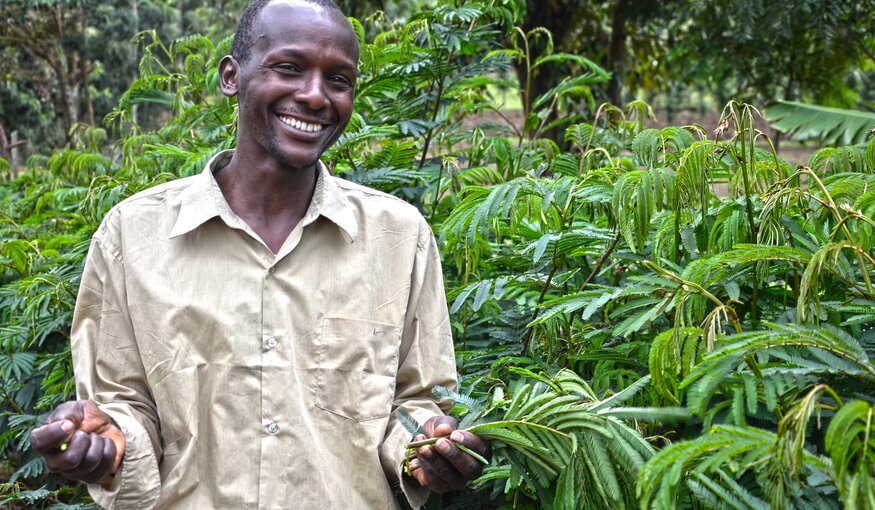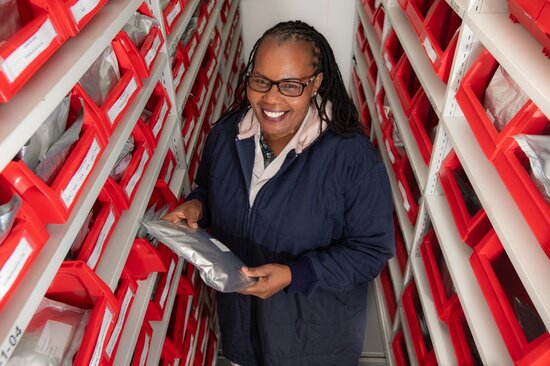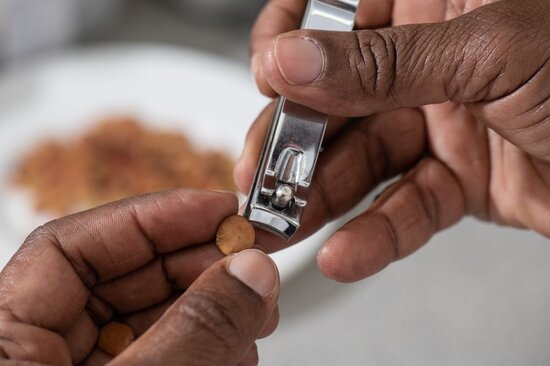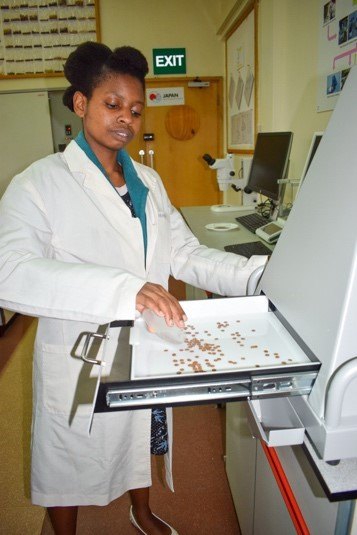Kenyan Farmers Can Bank on Tree Seeds
 David Kenduywo at his farm in Kembu, Bomet County, Kenya. He grows Calliandra for his dairy cattle. Photo: Sherry Odeyo/ICRAF
David Kenduywo at his farm in Kembu, Bomet County, Kenya. He grows Calliandra for his dairy cattle. Photo: Sherry Odeyo/ICRAF26 November 2020
Tree genebanks can make a valuable contribution to the food security and incomes of smallholder farmers in developing countries, a new study suggests.
The study, published in the journal Food Security, examined the experiences of farmers in Kenya who had requested seeds for multipurpose tree species from the World Agroforestry Centre (ICRAF). The aim was to understand why farmers value these trees so much as to go to the trouble of contacting the genebank in far-away Nairobi for seed.
“What we found is that farmers derive multiple benefits from incorporating trees into their farming systems, including better food security, higher incomes, and lower vulnerability to drought,” said Nelissa Jamora, agricultural economist with the Crop Trust and a co-author of the paper. “But in the absence of functioning seed markets and affordable commercial suppliers, it can be hard for them to obtain tree seeds, which is why they depend on the ICRAF genebank.”
The ICRAF genebank—a recent Editor’s Pick for the Food Planet Prize—plays a key role in conserving the genetic diversity of useful trees. It holds more than 14,000 accessions of fruit and multipurpose trees, representing about 190 species, in its lab and field sites, managed by the ICRAF Genetic Resources Unit.
The genebanks of CGIAR centres, of which ICRAF is one, distribute on average 100,000 samples to users worldwide each year, most of which go to breeders and researchers.
“On average, less than 10% of the samples the CGIAR genebanks distribute go directly to farmers,” Jamora said. “By contrast, about 90% of the samples ICRAF distributes go directly to farmers, farmer organizations and NGOs.”
Fodder, Glorious Fodder
For the study, lead author Kavengi Kitonga interviewed farmers who had received germplasm for the multipurpose leguminous trees Calliandra (Calliandra calothyrsus) and Gliricidia (Gliricidia sepium).
“We chose these two because they are the most requested species from the ICRAF genebank,” said Kitonga, who conducted her research as a Genebank Impacts Fellow supported by the CGIAR Genebank Platform.
Between 2008 and 2017, the ICRAF genebank distributed 690 seed samples of these trees (448 of Calliandra and 242 of Gliricidia) to smallholder farmers throughout Kenya.
Calliandra is of especial value to dairy farmers, as it provides an affordable source of high-protein fodder for their cows. High-protein fodder is important for increased milk production, but the typical fodder, Napier grass, needs to be supplemented with protein-rich dairy meal concentrate, which is expensive, often prohibitively so.
By adding Calliandra leaves instead of dairy meal concentrate, farmers are able to lower their costs, while increasing their incomes through greater production.
“Many farmers saved money because they purchased less grass and other inputs. One farmer mentioned that he also saved on transport costs because he no longer had to travel to purchase the dairy meal concentrate,” Kitonga said.
Another benefit of growing Calliandra was that it provides fodder even in the dry season, when farmers face the serious challenge of low feed quality and quantity.
Calliandra trees also help improve soil quality and reduce soil erosion.
“One farmer noted that he needs to use less fertilizer in the maize fields where he planted the trees,” Kitonga said.
Seeds in Short Supply
Yet obtaining seeds of Calliandra and Gliricidia is not easy. Private commercial suppliers are few, and farmers find their seeds to be very expensive, with no guarantee of satisfactory quality.
“Farmers have difficulty in obtaining high-quality seeds from these species from sources other than the genebank. Indeed, many were unable even to name sources other than ICRAF,” Kitonga said.
Many farmers praised the good germination rate of the seeds provided by ICRAF staff, who also provide guidance on how to tend the resulting seedlings in order to get the best possible trees.
“Fodder tree cultivation is very knowledge-intensive,” said Alice Muchugi, ICRAF’s Genebank Manager. “Farmers have limited or no extension support, so we must provide them with clear instructions, from nursery management to transplanting, if they are to achieve successful germination and establishment.”
In the absence of reliable commercial seed channels, farmers often share the tree germplasm within their communities, with 60% of the survey respondents reporting that they shared seeds with other farmers.
“The findings of this study really highlight how important the ICRAF tree genebank is for smallholder farmers,” Kitonga said. “We can expect that role to become even more pronounced, in the search for solutions to the numerous agricultural and environmental challenges that farmers are facing, in Kenya and elsewhere in Africa.”
This article was originally published on the CGIAR Genebank Platform website.
The CGIAR Genebank Platform, which ran from 2017 to the end of 2021, supported CGIAR Research Centers to fulfill their legal obligation to conserve and make available 750,000 seed samples of crops and trees on behalf of the global community under the International Treaty on Plant Genetic Resources for Food and Agriculture. The Platform supported day-to-day genebank operations, and activities to improve efficiency, enhance use and ensure compliance with international policy. This work was supported jointly by donor contributions to the CGIAR Fund and the Crop Trust Endowment Fund.
Categories: Genebank Platform, Genebanks



